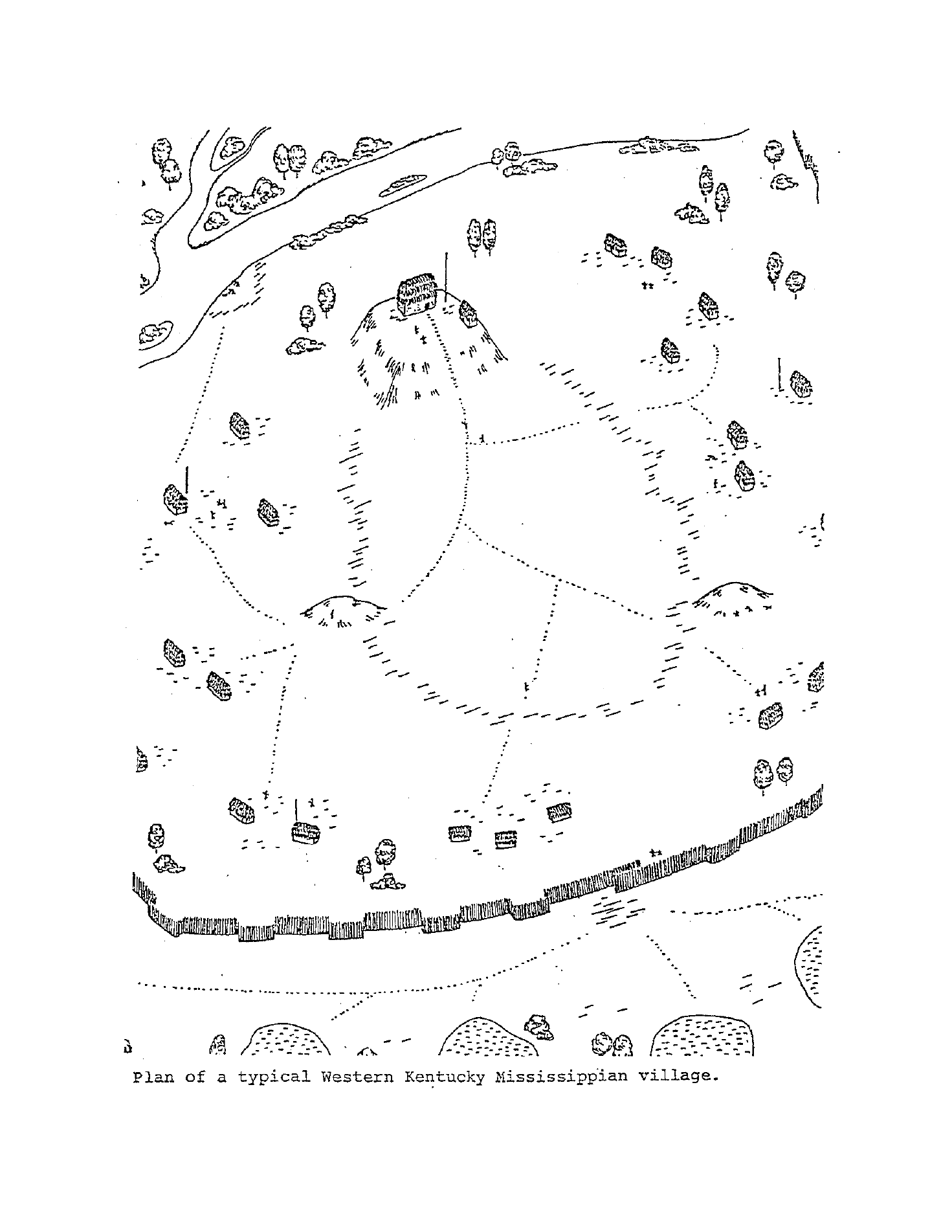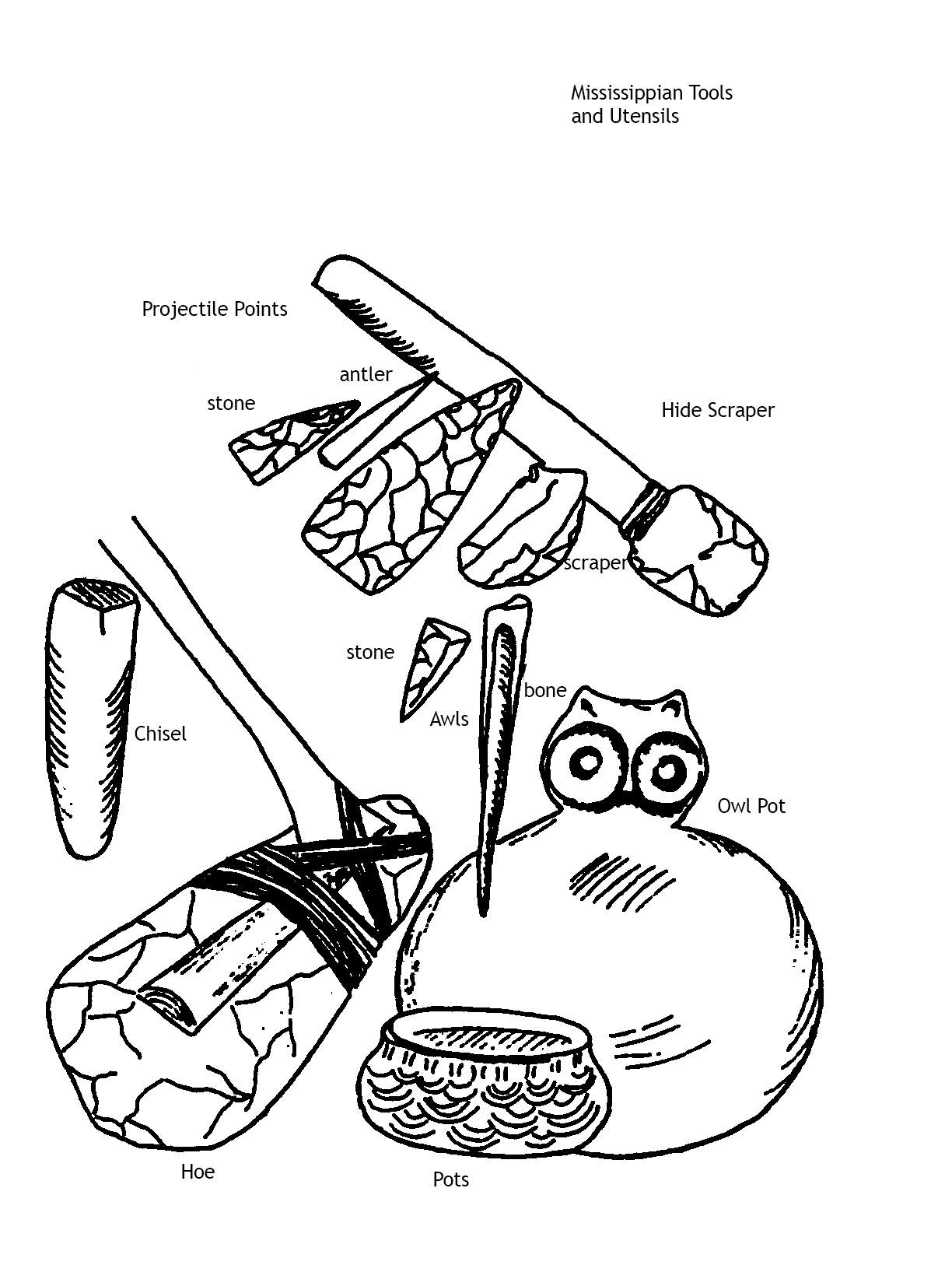The Mississippian (800 A.D. - 1600 A.D.)
The Mississippian culture tends to be split into three time periods: the Early Mississippian (800 A.D.-1,000 A.D.), Middle Mississippian (1,000 A.D.-1,400 A.D.), And Late Mississippian (1,400 A.D.-1,600 A.D.). Archaeologists treat the Mississippian as both a time period and a cultural group.
The Mississippian is known for the mounds created between 1,000-1,600 A.D. These mounds were constructed by people filling and carrying baskets of dirt, then dumping them onto a planned spot. As the dirt was dumped, it slowly gained height and was shaped into the mound. Some mounds would have buildings built on them, usually a priest or chief’s residence or a type of temple or ritual building.

A “typical” Mississippian mound center consisted of an open plaza thatwas bordered by platform and burial mounds, which were surrounded by houses, food storage, and work areas. The settlement would then be surrounded by a wall called a ‘palisade’. Platform mounds would serve as bases for temples and elite houses, such as the residence for the priest or chief. Living physically above the other residents would enforce their being ‘above’ the other community members.
Maize (corn) was a major part of people’s diet, and many people lived in villages and farmed maize. Mississippian farmsteads were one of the main types of Mississippian settlement during the Early Mississippian (AD 900-1000). These farmsteads would mainly grow maize, squash, and some beans. These settlements would have a lower population than Mississippian villages, with a smaller family unit running farmsteads. Houses were made from wattle and daub. These houses are typically rectangular and are built by interlacing branches (wattle) together followed by daubing clay onto the branches to seal any holes.

Shell-tempered pottery was first introduced during the Early Mississippian (AD 900-1000). The use of shell-tempered pottery allowed for stronger vessels and increased cooking efficiency. It was during this period that a wider variety of vessels appear, including jars, bowls, bottles, plates, and pans.
For more information about the Mississippian period, please see the resources below:
- The Kentucky Heritage Council
- Kentucky Archaeology edited by R. Barry Lewis
- Discover Kentucky Archaeology
(Images from Culture History of Kentucky Coloring Book and former Webb Museum teaching materials)